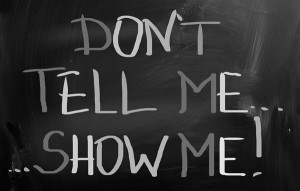Writers are an odd lot. We’d be the first to admit it. Writer’s post things like “That moment when you finish a book, look around, and realize that everyone is just carrying on with their lives as though you didn’t just experience emotional trauma at the hands of a paperback.” And because we’re writers, we’re also readers. At least we should be.
We reading/writing types are deeply and emotionally attached to the characters we read about. They become real for us in a way that often defies description. The closest I can come is to say that when I finish a well-written book, I feel as if I’m leaving behind great friends. Non-readers may scoff at us, suggesting that we simply re-read the book. That is an option, but what we want as readers is to move forward with our favorite characters, possibly gathering them all together regardless of genre, entwining them in our lives. That may seem a titch odd, but what can I say? We’re artists; perhaps this is why we write.
The interesting thing I have discovered as a reader/writer is that just like our real friends, we each have different criteria for which fictional characters we will allow in our lives. What first brought this to my attention was when I learned that my friend was reading Gone With the Wind for her classical literature book club. We discussed the book over lunch during which I admitted that I pushed myself to read it and could barely make it halfway through. I hated every minute of that piece of vintage literary fluff which actually surprised me because it came so highly recommended. After Margaret Mitchell’s endless declarations about the quaint South and dreary passages of battle scenes, the book was incredibly mediocre. Yet it wasn’t the writing that ruined it for me.
Scarlett was. I hated her. Each self-centered deed and word I had to endure at the hands of Scarlett made me want to beat her with a stick. I rooted against her at every turn and rejoiced when she didn’t get her way. Throw in spineless Ashley and sickening Melanie, and there was no way I was going to finish this book. I simply cannot stand annoying people in my real life, so why would I waste my time enduring three fictional nuisances? My friend, on the other hand, found Scarlett to be funny in her total self-absorption. Maybe my friend is more patient that I am.
 Then Dale came to mind. She’s a character from Joanna Trollope’s book, Other People’s Children. Dale was every bit as self-serving and manipulative as Scarlett and more so because she possessed a psychological hold on two other characters. She was evil, she was brilliant. I hated her with a passion and seriously considered writing Mrs. Trollope to request a sequel in which Dale was killed off slowly and painfully.
Then Dale came to mind. She’s a character from Joanna Trollope’s book, Other People’s Children. Dale was every bit as self-serving and manipulative as Scarlett and more so because she possessed a psychological hold on two other characters. She was evil, she was brilliant. I hated her with a passion and seriously considered writing Mrs. Trollope to request a sequel in which Dale was killed off slowly and painfully.
So what was the difference? Well, I’d never willingly allow someone like Dale in my life, but I wouldn’t hesitate to take her head on either. Whereas pathetic, annoying Scarlett wouldn’t earn a second glance from me as I ignored her in the most obvious ways possible. However, we’re dealing with the fictional realm, and in this world, Scarlett would never be able to compete with Dale as a worthy opponent and one that would engage me as a reader. Where Margaret Mitchell failed with Scarlett, Joanna Trollope succeeded with Dale.
In addition to the writing behind amazing characters that have the ability to evoke great response from the reader, our desires and tolerances make them appealing to us whether they are the protagonist, antagonist, or peripheral character. These factors combined determine who we will welcome into our minds. The beauty of this is that your choices don’t have to be all pleasant ones. You can fall for the bad character without any harmful side effects unlike real life where allowing the wicked person into your life may destroy you. It’s quite brilliant, really, and I wonder why more people don’t read.
Write Happy!






